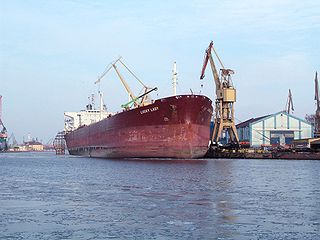In criminal and civil law, strict liability is a standard of liability under which a person is legally responsible for the consequences flowing from an activity even in the absence of fault or criminal intent on the part of the defendant.
Bolton v. Stone[1951] AC 850, [1951] 1 All ER 1078 is a leading House of Lords case in the tort of negligence, establishing that a defendant is not negligent if the damage to the plaintiff was not a reasonably foreseeable consequence of his conduct. The plaintiff was hit by a cricket ball which had been hit out of the ground; the defendants were members of the club committee.
Hadley v Baxendale [1854] EWHC J70 is a leading English contract law case. It sets the leading rule to determine consequential damages from a breach of contract: a breaching party is liable for all losses that the contracting parties should have foreseen, but is not liable for any losses that the breaching party could not have foreseen on the information available to him.

English tort law concerns the compensation for harm to people's rights to health and safety, a clean environment, property, their economic interests, or their reputations. A "tort" is a wrong in civil, rather than criminal law, that usually requires a payment of money to make up for damage that is caused. Alongside contracts and unjust enrichment, tort law is usually seen as forming one of the three main pillars of the law of obligations.

Overseas Tankship (UK) Ltd v The Miller Steamship Co or Wagon Mound , is a landmark tort case, concerning the test for breach of duty of care in negligence. The Judicial Committee of the Privy Council held that loss will be recoverable where the extent of possible harm is so great that a reasonable man would guard against it.
Causation is the "causal relationship between the defendant's conduct and end result". In other words, causation provides a means of connecting conduct with a resulting effect, typically an injury. In criminal law, it is defined as the actus reus from which the specific injury or other effect arose and is combined with mens rea to comprise the elements of guilt. Causation only applies where a result has been achieved and therefore is immaterial with regard to inchoate offenses.
In English tort law, an individual may owe a duty of care to another, to ensure that they do not suffer any unreasonable harm or loss. If such a duty is found to be breached, a legal liability is imposed upon the tortfeasor to compensate the victim for any losses they incur. The idea of individuals owing strangers a duty of care – where beforehand such duties were only found from contractual arrangements – developed at common law, throughout the 20th century. The doctrine was significantly developed in the case of Donoghue v Stevenson, where a woman succeeded in establishing a manufacturer of ginger beer owed her a duty of care, where it had been negligently produced. Following this, the duty concept has expanded into a coherent judicial test, which must be satisfied in order to claim in negligence.
Causation in English law concerns the legal tests of remoteness, causation and foreseeability in the tort of negligence. It is also relevant for English criminal law and English contract law.
Re Polemis & Furness, Withy & Co Ltd (1921) is an English tort case on causation and remoteness in the law of negligence..

Hughes v Lord Advocate[1963] UKHL 31 is an important Scottish delict case decided by the House of Lords on causation. The case is also influential in negligence in the English law of tort.
Smith v Littlewoods Organisation Ltd [1987] UKHL 18 was a House of Lords decision on duty of care in the tort of negligence. It was concerned in particular with potential liability for the wrongdoing of third parties.

Burnie Port Authority v General Jones Pty Ltd, is a tort law case from the High Court of Australia, which decided it would abolish the rule in Rylands v Fletcher, and the ignis suus principle, incorporating them generally into the tort of negligence.

Royscot Trust Ltd v Rogerson[1991] EWCA Civ 12 is an English contract law case on misrepresentation. It examines the Misrepresentation Act 1967 and addresses the extent of damages available under s 2(1) for negligent misrepresentation.
Smith v Leech Brain & Co [1962] 2 QB 405 is a landmark English tort law case in negligence, concerning remoteness of damage or causation in law. It marked the establishment of the eggshell skull rule, the idea that an individual is held responsible for the full consequences of his negligence, regardless of extra, or special damage caused to others.

Cambridge Water Co Ltd v Eastern Counties Leather plc [1994] 1 All ER 53 is a case in English tort law that established the principle that claims under nuisance and Rylands v Fletcher must include a requirement that the damage be foreseeable; it also suggested that Rylands was a sub-set of nuisance rather than an independent tort, a debate eventually laid to rest in Transco plc v Stockport Metropolitan Borough Council.
Lamb v Camden LBC[1981] EWCA Civ 7, [1981] QB 625 is a leading case in English tort law. It is a Court of Appeal decision on negligence and the test of reasonable foreseeability of damage, especially where the damage has been caused by third parties not the defendant him or herself.

Deloitte & Touche v Livent Inc 2017 SCC 63 is a leading case of the Supreme Court of Canada concerning the duty of care that auditors have toward their clients during the course of a professional engagement.
Doughty v Turner Manufacturing is a 1964 English case on the law of negligence.











